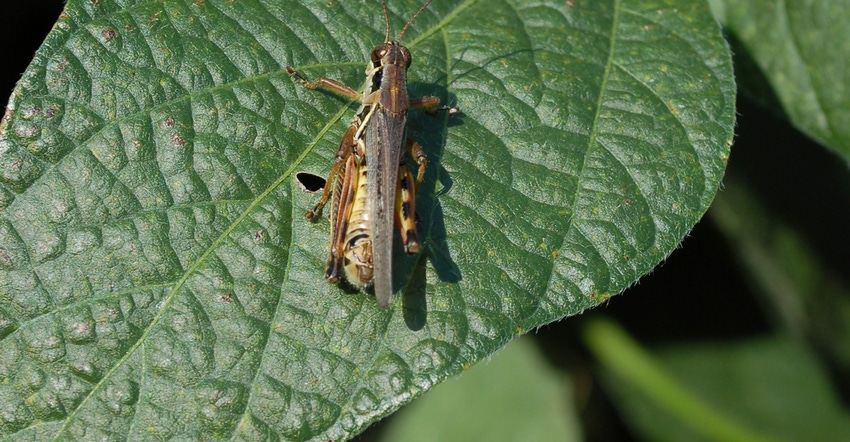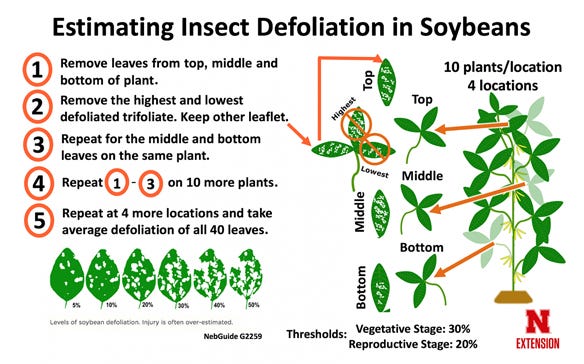January 28, 2020

By Robert Wright, Tom Hunt and Justin McMechan
Many defoliating insects may be found in Nebraska soybeans. Estimating defoliation levels in fields is the best way to decide whether it will pay to treat for these insects.
We saw several different insects in parts of Nebraska causing defoliation in soybeans in 2019. These included:
woolly bear caterpillars
green cloverworms
grasshoppers
bean leaf beetles
painted lady or thistle caterpillars
silver-spotted skipper caterpillars
Japanese beetles
Most of these insects are sporadic pests whose numbers vary from year to year and field to field. Some are migratory insects that do not overwinter in Nebraska, such as the thistle caterpillars and green cloverworms. Some are expanding their range in Nebraska, such as the Japanese beetle.
Regardless, when we have a mix of different insects feeding on soybean leaves, the best way to assess the need for insecticide treatment is to estimate the defoliation level from all insects present. In soybeans, insecticide treatment is recommended when insects are present, and damage is expected to exceed 30% defoliation in the vegetative stage and 20% in the reproductive stage.
For more information, see Managing Soybean Defoliators, NebGuide G2259. In addition to defoliation levels, it also is important to identify which insect species are present, their size and abundance. This information will help you decide which insecticide product and rate should be used if treatment is needed.
Estimating defoliation can be difficult without practice. The chart below provides guidance on how to more accurately estimate defoliation in soybeans.

Wright is a Nebraska Extension entomologist; Hunt is a Nebraska Extension entomologist; and McMechan is a Nebraska Extension crop protection and cropping systems specialist.
Source: UNL CropWatch, which is solely responsible for the information provided and is wholly owned by the source. Informa Business Media and all its subsidiaries are not responsible for any of the content contained in this information asset.
You May Also Like




